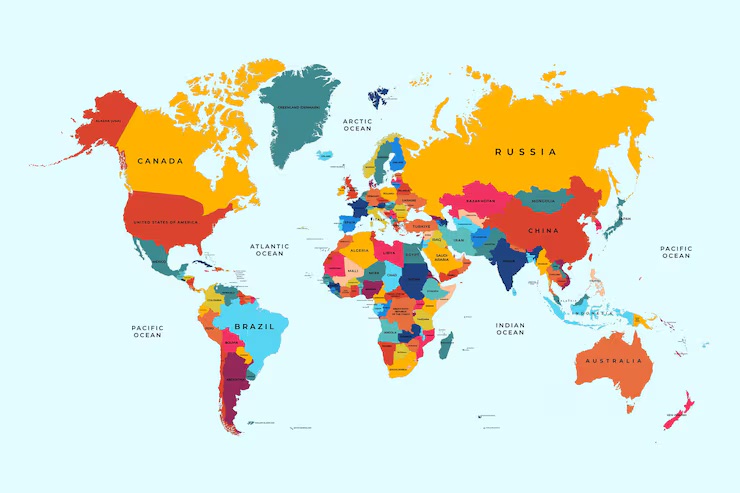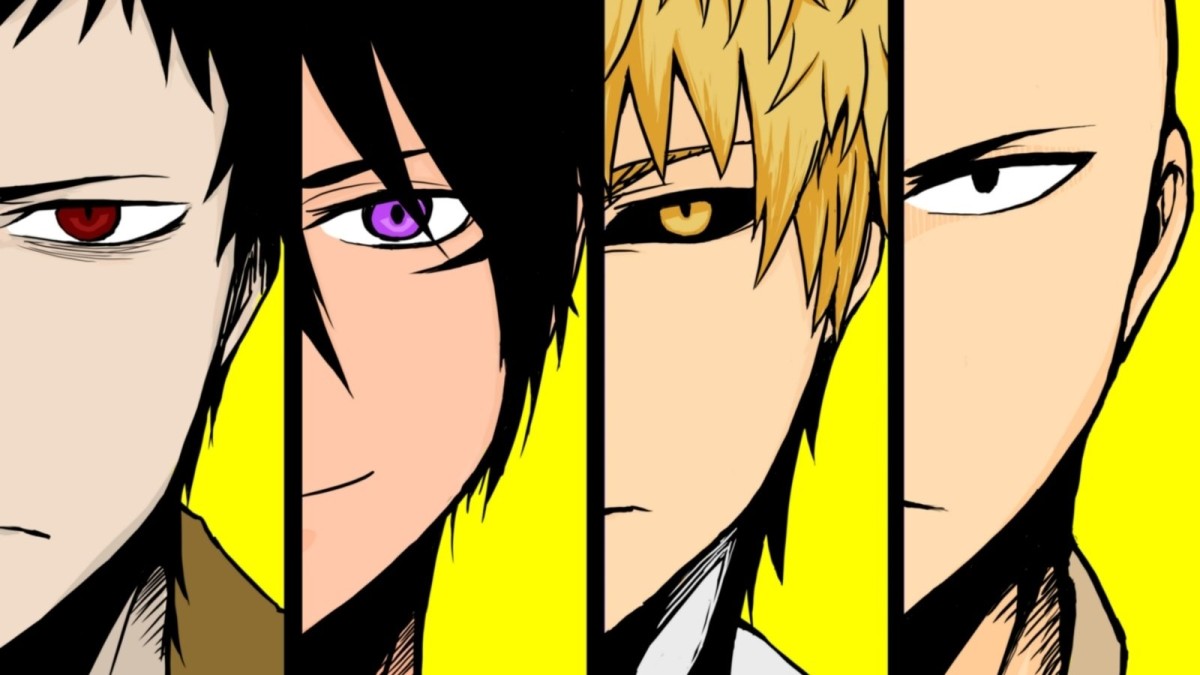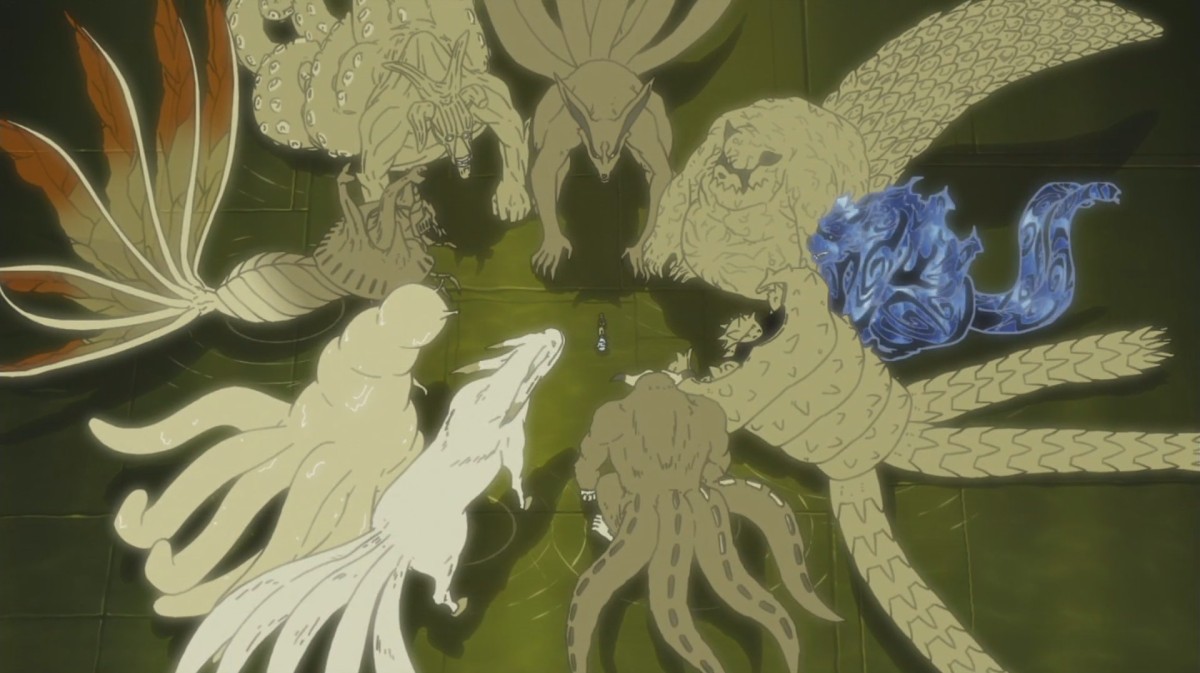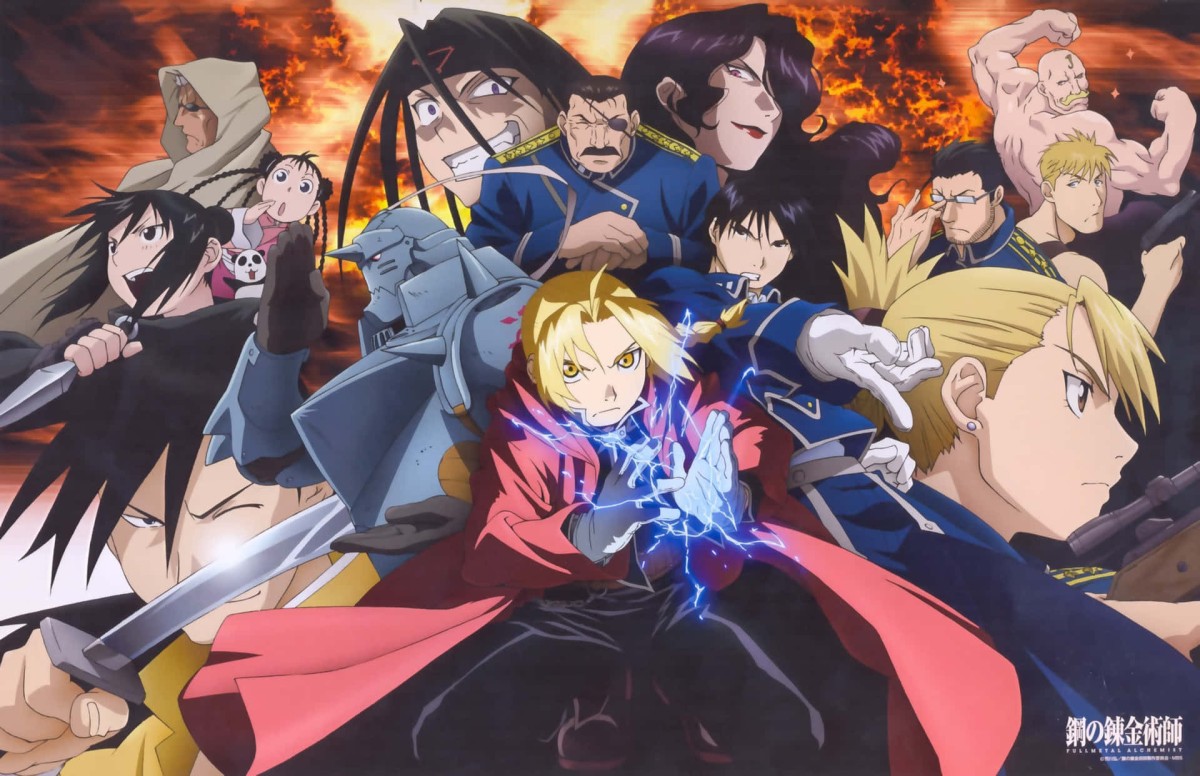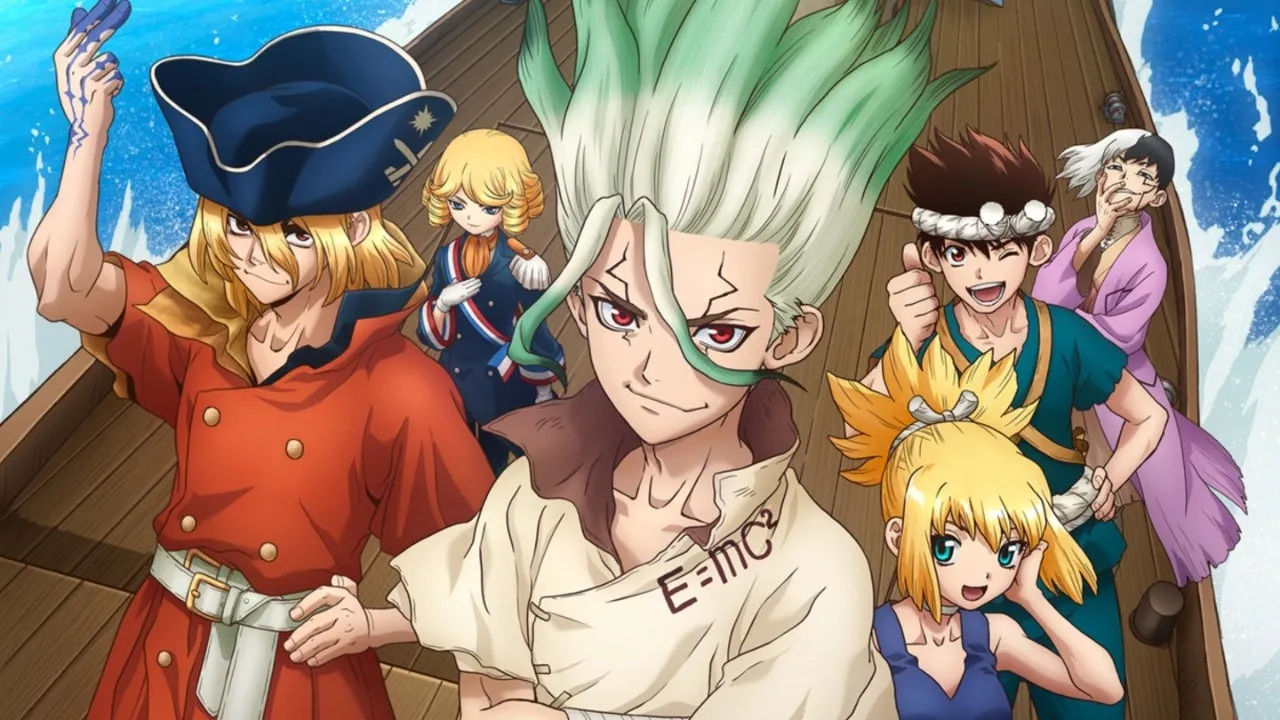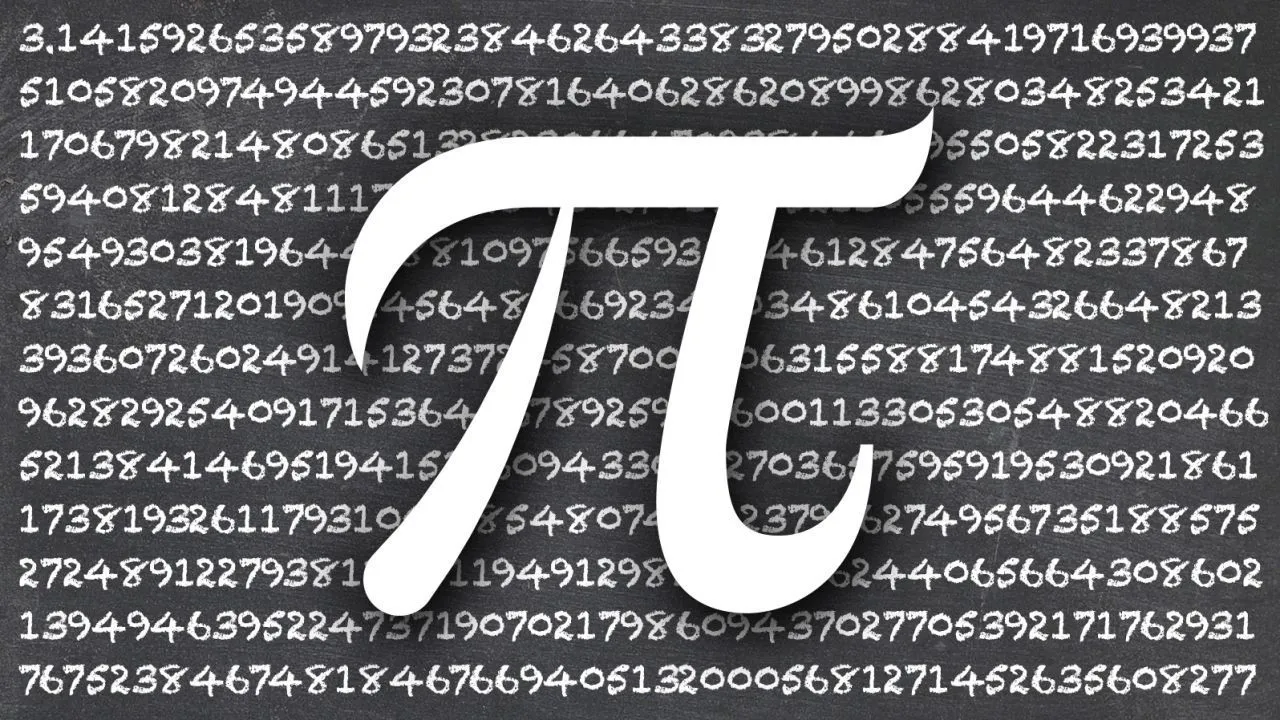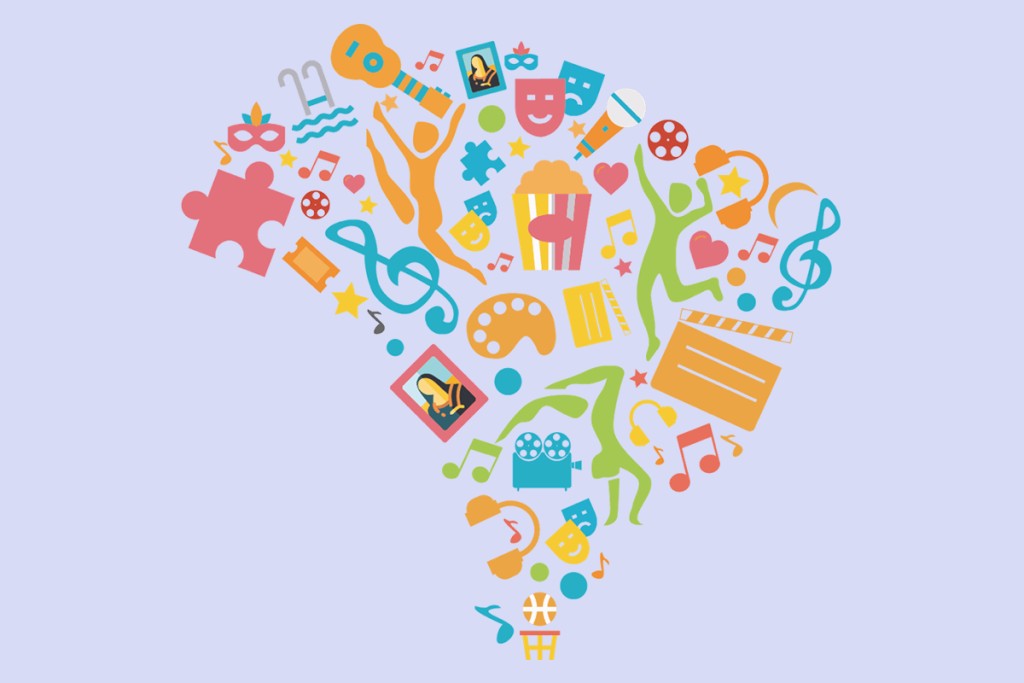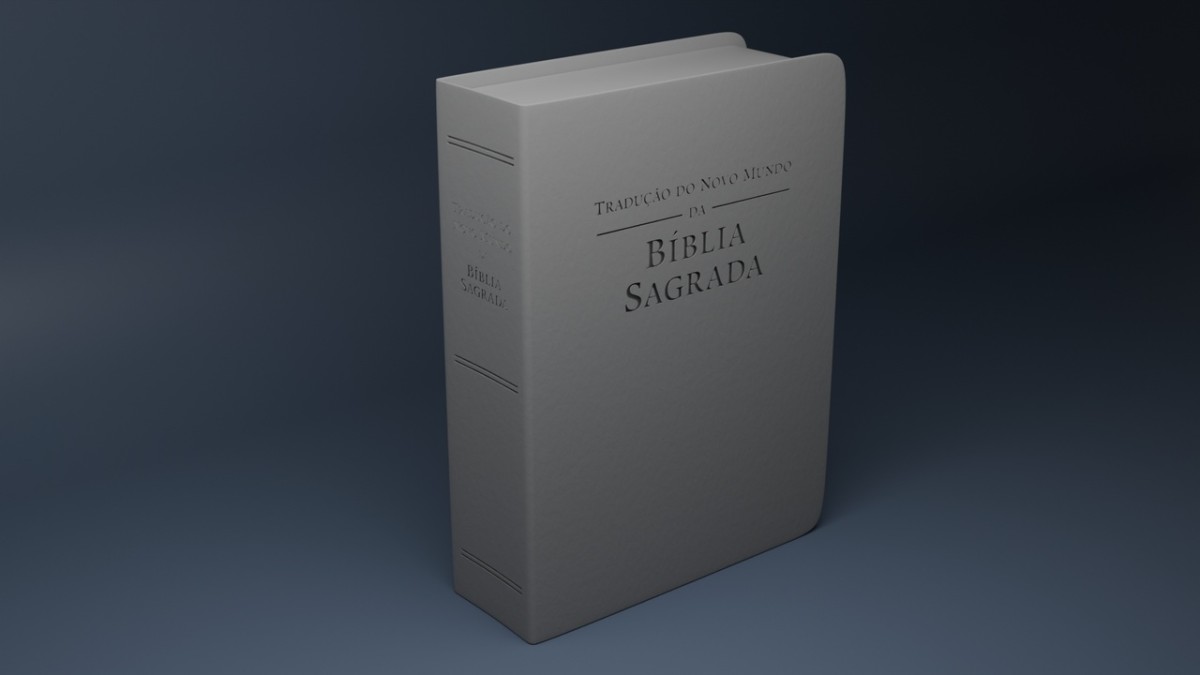Do you like geography, maps, and world curiosities? Then this DLE of Countries is for you! With each guess, you compare your answer with the secret country through clues like continent, population, area, hemisphere, oceans/seas, borders, and thematic tags. It's a fast and addictive way to learn and sharpen your general knowledge.
Classic Mode
Photo Mode
Guess the character through a distorted image. With each mistake, the image becomes clearer!
In photo mode, you must discover the correct one through the image and some clues!
Guess by the Portrait Time: Attempts: Your guess... Kick Reveal Colors (costs 1) GOOD! You got it right! Wrong! The image improved a little... Revealed colors! Time expired. Attempts have run out. Invalid or corrupted game link. Character bank not found. You lost. The correct answer was: Buy tracks Reveal (costs 1) No clues available. You lost. The correct answer was: GOOD! You got it right!Citation Mode
In citation mode, you must cite names of characters corresponding to the chosen criterion.
2. Type the name of a character to set the criterion and start the game:
Survival Mode
Get as many characters as you can based on random criteria. If you fail, it's over!
| Name | Continent | Population | Area (km²) | Hemisphere | Oceans/Seas | Borders | Tags |
|---|
| Name | Continent | Population | Area (km²) | Hemisphere | Oceans/Seas | Borders | Tags |
|---|---|---|---|---|---|---|---|
| Brazil | South America | 215300000 | 8515767 | Both | Atlantic Ocean | Argentina, Bolivia, Colombia, French Guiana, Guyana, Paraguay, Peru, Suriname, Uruguay, Venezuela | Tropical Forest, G20, Coffee |
| Argentina | South America | 45810000 | 2780400 | South | Atlantic Ocean | Bolivia, Brazil, Chile, Paraguay, Uruguay | G20, Livestock, Snow |
| Chile | South America | 19490000 | 756102 | South | Pacific Ocean | Argentina, Bolivia, Peru | Mountain, Desert, Wine, Volcano |
| Colombia | South America | 51520000 | 1141748 | Both | Atlantic Ocean, Pacific Ocean | Brazil, Ecuador, Panama, Peru, Venezuela | Tropical Forest, Mountain, Coffee |
| Peru | South America | 33720000 | 1285216 | South | Pacific Ocean | Ecuador, Colombia, Brazil, Bolivia, Chile | Mountain, Tropical Forest, Ancient History |
| Bolivia | South America | 12080000 | 1098581 | South | Brazil, Paraguay, Argentina, Chile, Peru | Mountain, Tropical Forest | |
| Uruguay | South America | 3426000 | 176215 | South | Atlantic Ocean | Argentina, Brazil | Cattle ranching, Plain |
| Venezuela | South America | 28200000 | 916445 | North | Atlantic Ocean | Brazil, Colombia, Guyana | Oil, Mountain |
| Ecuador | South America | 17800000 | 283561 | Both | Pacific Ocean | Colombia, Peru | Volcano, Tropical Rainforest, Island |
| Paraguay | South America | 6704000 | 406752 | South | Argentina, Bolivia, Brazil | Famous River | |
| Guiana | South America | 800000 | 214969 | North | Atlantic Ocean | Brazil, Suriname, Venezuela | Tropical Forest, Oil |
| Suriname | South America | 600000 | 163820 | North | Atlantic Ocean | Brazil, Guyana, French Guiana | Tropical Forest, Mining |
| Trinidad and Tobago | South America | 1530000 | 5131 | North | Caribbean Sea, Atlantic Ocean | Island, Oil, Carnival | |
| United States | North America | 331900000 | 9833520 | North | Atlantic Ocean, Pacific Ocean, Arctic Ocean | Canada, Mexico | G20, Technology, Snow, Desert |
| Canada | North America | 38250000 | 9984670 | North | Atlantic Ocean, Pacific Ocean, Arctic Ocean | United States | Snow, G20, Monarchy, Boreal Forest |
| Mexico | North America | 126700000 | 1972550 | North | Pacific Ocean, Atlantic Ocean | United States, Guatemala, Belize | G20, Ancient History, Desert |
| Cuba | North America | 11330000 | 109884 | North | Atlantic Ocean | Island, Cane | |
| Panama | North America | 4380000 | 75417 | North | Atlantic Ocean, Pacific Ocean | Colombia, Costa Rica | Channel, Tropical Forest |
| Costa Rica | North America | 5150000 | 51100 | North | Atlantic Ocean, Pacific Ocean | Nicaragua, Panama | Tropical Forest, Volcano, Tourism |
| Guatemala | North America | 17110000 | 108889 | North | Atlantic Ocean, Pacific Ocean | Mexico, Belize, Honduras, El Salvador | Ancient History, Volcano |
| Jamaica | North America | 2827000 | 10991 | North | Atlantic Ocean | Island, Music | |
| Honduras | Central America | 10280000 | 112492 | North | Caribbean Sea, Pacific Ocean | Guatemala, El Salvador, Nicaragua | Ancient History, Tropical Forest |
| Nicaragua | Central America | 6850000 | 130373 | North | Caribbean Sea, Pacific Ocean | Honduras, Costa Rica | Volcano, Lake |
| El Salvador | Central America | 6310000 | 21041 | North | Pacific Ocean | Guatemala, Honduras | Volcano |
| Dominican Republic | North America | 11120000 | 48671 | North | Atlantic Ocean, Caribbean Sea | Haiti | Island, Tourism |
| Haiti | North America | 11450000 | 27750 | North | Atlantic Ocean, Caribbean Sea | Dominican Republic | Island, Mountain |
| Belize | Central America | 400000 | 22966 | North | Caribbean Sea | Mexico, Guatemala | Coral Reef, Tropical Forest |
| Bahamas | North America | 408000 | 13943 | North | Atlantic Ocean | Island, Tourism, Beach | |
| Barbados | North America | 281000 | 439 | North | Atlantic Ocean, Caribbean Sea | Island, Tourism, Beach | |
| Santa Lucia | North America | 180000 | 616 | North | Atlantic Ocean, Caribbean Sea | Island, Volcano, Tourism, Mountain | |
| Antigua and Barbuda | North America | 93000 | 442 | North | Atlantic Ocean, Caribbean Sea | Island, Tourism, Beach | |
| Dominica | North America | 72000 | 751 | North | Atlantic Ocean, Caribbean Sea | Island, Volcano, Rainforest | |
| Saint Christopher and Nevis | North America | 47000 | 261 | North | Atlantic Ocean, Caribbean Sea | Island, Tourism, Volcano | |
| Germany | Europe | 83200000 | 357022 | North | North Sea, Baltic Sea | Denmark, Poland, Czech Republic, Austria, Switzerland, France, Luxembourg, Belgium, Netherlands | G20, Industry, Vehicles |
| France | Europe | 65270000 | 551695 | North | Atlantic Ocean, Mediterranean Sea | Spain, Andorra, Monaco, Italy, Switzerland, Germany, Luxembourg, Belgium | G20, Wine, Tourism |
| Spain | Europe | 47420000 | 505990 | North | Atlantic Ocean, Mediterranean Sea | France, Andorra, Portugal, Gibraltar, Morocco | Peninsula, Monarchy, Wine, Tourism |
| Portugal | Europe | 10190000 | 92212 | North | Atlantic Ocean | Spain | Peninsula, Wine, Tourism |
| Italy | Europe | 59110000 | 301340 | North | Mediterranean Sea | France, Switzerland, Austria, Slovenia | Peninsula, G20, Ancient History, Wine |
| United Kingdom | Europe | 67220000 | 242495 | North | Atlantic Ocean, North Sea | Ireland | Island, Monarchy, G20, Industry |
| Ireland | Europe | 5030000 | 70273 | North | Atlantic Ocean | United Kingdom | Island |
| Russia | Europe | 145500000 | 17098246 | North | Pacific Ocean, Arctic Ocean, Baltic Sea, Black Sea | Norway, Finland, Estonia, Latvia, Lithuania, Poland, Belarus, Ukraine, Georgia, Azerbaijan, Kazakhstan, China, Mongolia, North Korea | Snow, G20, Oil, Boreal Forest |
| Switzerland | Europe | 8700000 | 41285 | North | France, Germany, Italy, Austria, Liechtenstein | Mountain, Snow, Chocolate | |
| Norway | Europe | 5400000 | 385207 | North | Atlantic Ocean, Arctic Ocean | Sweden, Finland, Russia | Snow, Monarchy, Oil, Fjord |
| Sweden | Europe | 10450000 | 450295 | North | Baltic Sea | Norway, Finland | Snow, Monarchy, Industry |
| Greece | Europe | 10420000 | 131957 | North | Mediterranean Sea | Albania, North Macedonia, Bulgaria, Turkey | Peninsula, Ancient History, Tourism, Island |
| Poland | Europe | 37950000 | 312696 | North | Baltic Sea | Germany, Czech Republic, Slovakia, Ukraine, Belarus, Lithuania, Russia | Plain |
| Ukraine | Europe | 43730000 | 603628 | North | Black Sea | Poland, Slovakia, Hungary, Romania, Moldova, Russia, Belarus | Plain, Agribusiness |
| Netherlands | Europe | 17530000 | 41543 | North | North Sea | Germany, Belgium | Plain, Monarchy |
| Belgium | Europe | 11590000 | 30528 | North | North Sea | France, Germany, Luxembourg, Netherlands | Monarchy, Chocolate |
| Austria | Europe | 8956000 | 83879 | North | Germany, Czech Republic, Slovakia, Hungary, Slovenia, Italy, Switzerland, Liechtenstein | Mountain, Snow, Music | |
| Iceland | Europe | 372000 | 103000 | North | Atlantic Ocean | Island, Volcano, Snow, Fjord | |
| Finland | Europe | 5540000 | 338424 | North | Baltic Sea | Sweden, Norway, Russia | Snow, Boreal Forest, Northern Lights, Lake |
| Denmark | Europe | 5850000 | 43094 | North | Baltic Sea, North Sea | Germany | Peninsula, Monarchy, Island |
| Czech Republic | Europe | 10510000 | 78866 | North | Germany, Poland, Slovakia, Austria | History, Beer | |
| Hungary | Europe | 9730000 | 93030 | North | Slovakia, Ukraine, Romania, Serbia, Croatia, Slovenia, Austria | Famous River | |
| Romania | Europe | 19120000 | 238397 | North | Black Sea | Hungary, Serbia, Bulgaria, Ukraine, Moldova | Mountain, History |
| Croatia | Europe | 4036000 | 56594 | North | Adriatic Sea | Slovenia, Hungary, Serbia, Bosnia and Herzegovina, Montenegro | Island, Tourism, History |
| Luxembourg | Europe | 640000 | 2586 | North | Belgium, France, Germany | Monarchy, Finances | |
| Belarus | Europe | 9340000 | 207600 | North | Russia, Ukraine, Poland, Lithuania, Latvia | Plain, Forest | |
| Lithuania | Europe | 2750000 | 65300 | North | Baltic Sea | Latvia, Belarus, Poland, Russia | Baltic, Plain |
| Serbia | Europe | 7150000 | 88361 | North | Hungary, Romania, Bulgaria, North Macedonia, Albania, Montenegro, Bosnia and Herzegovina, Croatia | Balkans, Famous River | |
| Bosnia and Herzegovina | Europe | 3270000 | 51197 | North | Adriatic Sea | Croatia, Serbia, Montenegro | Balkans, Mountain, History |
| Andorra | Europe | 77000 | 468 | North | France, Spain | Microstate, Mountain, Snow, Tourism | |
| Liechtenstein | Europe | 39000 | 160 | North | Switzerland, Austria | Microstate, Mountain, Finance, Monarchy | |
| Monaco | Europe | 39000 | 2 | North | Mediterranean Sea | France | Microstate, Tourism, Finance, Monarchy |
| Malta | Europe | 520000 | 316 | North | Mediterranean Sea | Island, Tourism, History | |
| Slovakia | Europe | 5450000 | 49035 | North | Czech Republic, Poland, Ukraine, Hungary, Austria | Mountain, Castle | |
| Slovenia | Europe | 2100000 | 20273 | North | Adriatic Sea | Italy, Austria, Hungary, Croatia | Mountain, Snow, Lake |
| Estonia | Europe | 1330000 | 45339 | North | Baltic Sea | Latvia, Russia | Baltic, Technology, Digital |
| Latvia | Europe | 1880000 | 64589 | North | Baltic Sea | Estonia, Russia, Belarus, Lithuania | Baltic, Forest |
| Cyprus | Europe | 1210000 | 9251 | North | Mediterranean Sea | Island, Tourism, History | |
| San Marino | Europe | 34000 | 61 | North | Italy | Microstate, Enclave, Ancient Republic | |
| Vatican | Europe | 800 | 0.44 | North | Italy | Microstate, Enclave, Religion, History | |
| Albania | Europe | 2830000 | 28748 | North | Adriatic Sea, Ionian Sea | Montenegro, Serbia, North Macedonia, Greece | Balkans, Mountain |
| North Macedonia | Europe | 2080000 | 25713 | North | Serbia, Bulgaria, Greece, Albania | Balkans, Mountain, Lake | |
| Montenegro | Europe | 620000 | 13812 | North | Adriatic Sea | Croatia, Bosnia and Herzegovina, Serbia, Albania | Balkans, Mountain, Fjord |
| Japan | Asia | 125700000 | 377975 | North | Pacific Ocean | Island, Mountain, G20, Technology | |
| China | Asia | 1425000000 | 9596961 | North | Pacific Ocean | Afghanistan, Bhutan, India, Kazakhstan, Kyrgyzstan, Laos, Mongolia, Myanmar, Nepal, North Korea, Pakistan, Russia, Tajikistan, Vietnam | G20, Mountain, Desert, Technology |
| India | Asia | 1408000000 | 3287590 | North | Indian Ocean | Pakistan, China, Nepal, Bhutan, Bangladesh, Myanmar | Península, G20, Technology, Mountain |
| Indonesia | Asia | 273800000 | 1904569 | Both | Indian Ocean, Pacific Ocean | Malaysia, Papua New Guinea, Timor-Leste | Island, G20, Tropical Forest, Volcano |
| Saudi Arabia | Asia | 35950000 | 2149690 | North | Red Sea, Persian Gulf | Jordan, Iraq, Kuwait, Qatar, United Arab Emirates, Oman, Yemen | Desert, Monarchy, Oil, G20 |
| Vietnam | Asia | 97470000 | 331212 | North | Pacific Ocean | China, Laos, Cambodia | Peninsula, Famous River, Coffee |
| Thailand | Asia | 71600000 | 513120 | North | Pacific Ocean, Indian Ocean | Myanmar, Laos, Cambodia, Malaysia | Peninsula, Tropical Forest, Tourism, Monarchy |
| South Korea | Asia | 51740000 | 100210 | North | Pacific Ocean | North Korea | Peninsula, G20, Technology |
| Turkey | Asia | 84780000 | 783562 | North | Mediterranean Sea, Black Sea | Greece, Bulgaria, Georgia, Armenia, Azerbaijan, Iran, Iraq, Syria | Peninsula, G20, Ancient History |
| Iran | Asia | 87920000 | 1648195 | North | Persian Gulf, Caspian Sea | Iraq, Turkey, Azerbaijan, Armenia, Turkmenistan, Afghanistan, Pakistan | Desert, Mountain, Oil |
| Israel | Asia | 9360000 | 22072 | North | Mediterranean Sea, Red Sea | Egypt, Jordan, Lebanon, Syria | Desert, Ancient History, Technology |
| Philippines | Asia | 113900000 | 300000 | North | Pacific Ocean | Island, Volcano | |
| Malaysia | Asia | 33570000 | 330803 | North | Pacific Ocean, Indian Ocean | Brunei, Indonesia, Thailand | Peninsula, Tropical Forest |
| Kazakhstan | Asia | 19000000 | 2724900 | North | Caspian Sea | Russia, China, Kyrgyzstan, Uzbekistan, Turkmenistan | Steppe, Oil |
| Pakistan | Asia | 231400000 | 881913 | North | Arabian Sea | India, Afghanistan, Iran, China | Mountain, Desert, Large Population |
| Bangladesh | Asia | 169400000 | 147570 | North | Bengal Bay | India, Myanmar | Famous River, Plain, Large Population |
| United Arab Emirates | Asia | 9365000 | 83600 | North | Persian Gulf, Gulf of Oman | Oman, Saudi Arabia | Desert, Oil, Finance, Tourism |
| North Korea | Asia | 25970000 | 120540 | North | Japan Sea, Yellow Sea | China, Russia, South Korea | Peninsula, Mountain |
| Iraq | Asia | 43530000 | 438317 | North | Persian Gulf | Jordan, Syria, Turkey, Iran, Kuwait, Saudi Arabia | Desert, Oil, Ancient History, Famous River |
| Nepal | Asia | 30030000 | 147181 | North | China, India | Mountain, Himalayas, Ancient History | |
| Myanmar | Asia | 53800000 | 676578 | North | Bay of Bengal, Andaman Sea | Bangladesh, India, China, Laos, Thailand | Tropical Forest, Ancient History |
| Cambodia | Asia | 16770000 | 181035 | North | Gulf of Thailand | Thailand, Laos, Vietnam | Ancient History, Famous River, Tropical Forest |
| Jordan | Asia | 11150000 | 89342 | North | Red Sea | Saudi Arabia, Iraq, Syria, Israel | Desert, Monarchy, Ancient History, Tourism |
| Oman | Asia | 4520000 | 309500 | North | Gulf of Oman, Arabian Sea | United Arab Emirates, Saudi Arabia, Yemen | Desert, Monarchy, Oil |
| Laos | Asia | 7425000 | 236800 | North | Myanmar, China, Vietnam, Cambodia, Thailand | Tropical Forest, Famous River, Southeast Asia | |
| Turkmenistan | Asia | 6340000 | 488100 | North | Caspian Sea | Kazakhstan, Uzbekistan, Afghanistan, Iran | Desert, Natural Gas, Steppe |
| Kyrgyzstan | Asia | 6690000 | 199951 | North | Kazakhstan, Uzbekistan, Tajikistan, China | Mountain, Steppe, Nomad | |
| Sri Lanka | Asia | 22160000 | 65610 | North | Indian Ocean | Island, Tea, Tourism, Biodiversity | |
| Afghanistan | Asia | 40100000 | 652864 | North | Iran, Pakistan, Turkmenistan, Uzbekistan, Tajikistan, China | Mountain, History | |
| Uzbekistan | Asia | 35650000 | 447400 | North | Kazakhstan, Turkmenistan, Afghanistan, Tajikistan, Kyrgyzstan | Steppe, Ancient History, Silk | |
| Catar | Asia | 2690000 | 11586 | North | Persian Gulf | Saudi Arabia | Peninsula, Desert, Oil, Natural Gas |
| Tajikistan | Asia | 9750000 | 143100 | North | Afghanistan, Uzbekistan, Kyrgyzstan, China | Mountain, Steppe | |
| Brunei | Asia | 445000 | 5765 | North | South China Sea | Malaysia | Monarchy, Oil, Tropical Forest |
| Bhutan | Asia | 780000 | 38394 | North | China, India | Monarchy, Mountain, Himalayas, Buddhism | |
| Maldives | Asia | 520000 | 298 | Both | Indian Ocean | Island, Atoll, Tourism, Beach | |
| Kuwait | Asia | 4250000 | 17818 | North | Persian Gulf | Iraq, Saudi Arabia | Desert, Oil, Monarchy |
| Egypt | Africa | 109300000 | 1002450 | North | Mediterranean Sea, Red Sea | Libya, Sudan, Israel | Desert, Ancient History, Famous River |
| Nigeria | Africa | 213400000 | 923768 | North | Atlantic Ocean | Benin, Niger, Chad, Cameroon | Oil, Savanna |
| South Africa | Africa | 59390000 | 1221037 | South | Atlantic Ocean, Indian Ocean | Namibia, Botswana, Zimbabwe, Mozambique, Eswatini, Lesotho | G20, Mining, Savannah, Wine |
| Morocco | Africa | 37080000 | 446550 | North | Atlantic Ocean, Mediterranean Sea | Algeria, Spain | Desert, Mountain, Monarchy |
| Kenya | Africa | 53000000 | 580367 | Both | Indian Ocean | Ethiopia, Somalia, South Sudan, Tanzania, Uganda | Savannah, Café, Tourism |
| Ethiopia | Africa | 120300000 | 1104300 | North | Djibouti, Eritrea, Kenya, Somalia, South Sudan, Sudan | Mountain, Coffee, Ancient History | |
| Win | Africa | 32830000 | 238535 | North | Atlantic Ocean | Burkina Faso, Ivory Coast, Togo | Cocoa, Mining |
| Angola | Africa | 34500000 | 1246700 | South | Atlantic Ocean | Namibia, Zambia, Democratic Republic of the Congo, Republic of the Congo | Oil, Savanna |
| Madagascar | Africa | 28920000 | 587041 | South | Indian Ocean | Island, Biodiversity | |
| Tanzania | Africa | 63590000 | 947303 | South | Indian Ocean | Kenya, Uganda, Rwanda, Burundi, Democratic Republic of the Congo, Zambia, Malawi, Mozambique | Savannah, Mountain, Tourism |
| Algeria | Africa | 44180000 | 2381741 | North | Mediterranean Sea | Morocco, Mauritania, Mali, Niger, Libya, Tunisia | Desert, Petroleum |
| Sudan | Africa | 45660000 | 1886068 | North | Red Sea | Egypt, Libya, Chad, Central African Republic, South Sudan, Ethiopia, Eritrea | Desert, Famous River |
| Democratic Republic of the Congo | Africa | 95890000 | 2344858 | Both | Atlantic Ocean | Republic of the Congo, Central African Republic, South Sudan, Uganda, Rwanda, Burundi, Tanzania, Zambia, Angola | Tropical Forest, Mining, Famous River |
| Tunisia | Africa | 12260000 | 163610 | North | Mediterranean Sea | Algeria, Libya | Desert, Ancient History, Tourism |
| Mozambique | Africa | 32080000 | 801590 | South | Indian Ocean | Tanzania, Malawi, Zambia, Zimbabwe, South Africa, Eswatini | Savannah, Beach |
| Zimbabwe | Africa | 15990000 | 390757 | South | Zambia, Mozambique, South Africa, Botswana | Savannah, Mining, Waterfall | |
| Libya | Africa | 6735000 | 1759540 | North | Mediterranean Sea | Egypt, Sudan, Chad, Niger, Algeria, Tunisia | Desert, Oil, Ancient History |
| Uganda | Africa | 47120000 | 241038 | Both | Kenya, South Sudan, Democratic Republic of the Congo, Rwanda, Tanzania | Savanna, Lake, Mountain | |
| Zambia | Africa | 19470000 | 752618 | South | Democratic Republic of the Congo, Tanzania, Malawi, Mozambique, Zimbabwe, Botswana, Namibia, Angola | Savannah, Mining, Waterfall | |
| Namibia | Africa | 2530000 | 825615 | South | Atlantic Ocean | Angola, Zambia, Botswana, South Africa | Desert, Savanna, Tourism |
| Botswana | Africa | 2630000 | 581730 | South | Namibia, Zambia, Zimbabwe, South Africa | Savanna, Desert, Diamond | |
| Ivory Coast | Africa | 28160000 | 322463 | North | Atlantic Ocean | Liberia, Guinea, Mali, Burkina Faso, Ghana | Cocoa, Tropical Forest |
| Mali | Africa | 21900000 | 1240192 | North | Algeria, Niger, Burkina Faso, Ivory Coast, Guinea, Senegal, Mauritania | Desert, Famous River, Ancient History | |
| Senegal | Africa | 17200000 | 196722 | North | Atlantic Ocean | Mauritania, Mali, Guinea, Guinea-Bissau, Gambia | Savannah, Music |
| Shrimp | Africa | 27200000 | 475442 | North | Atlantic Ocean | Nigeria, Chad, Central African Republic, Republic of the Congo, Gabon, Equatorial Guinea | Tropical Forest, Savanna, Volcano |
| Rwanda | Africa | 13460000 | 26338 | South | Uganda, Tanzania, Burundi, Democratic Republic of the Congo | Mountain, Gorilla, Lake | |
| Lesotho | Africa | 2280000 | 30355 | South | South Africa | Mountain, Monarchy, Enclave | |
| Cape Verde | Africa | 562000 | 4033 | North | Atlantic Ocean | Island, Volcano, Music | |
| Chade | Africa | 17180000 | 1284000 | North | Libya, Sudan, Central African Republic, Cameroon, Nigeria, Niger | Desert, Savannah, Lake | |
| Guinea | Africa | 13530000 | 245857 | North | Atlantic Ocean | Guinea-Bissau, Senegal, Mali, Ivory Coast, Liberia, Sierra Leone | Mining, Bauxite |
| Somalia | Africa | 17070000 | 637657 | Both | Indian Ocean | Djibouti, Ethiopia, Kenya | Desert, Long Coast |
| Maurício | Africa | 1260000 | 2040 | South | Indian Ocean | Island, Tourism, Biodiversity, Sugarcane | |
| Gabon | Africa | 2340000 | 267667 | Both | Atlantic Ocean | Equatorial Guinea, Cameroon, Republic of the Congo | Tropical Forest, Oil |
| Burundi | Africa | 12550000 | 27834 | South | Rwanda, Tanzania, Democratic Republic of the Congo | Mountain, Lake, Coffee | |
| Malawi | Africa | 19890000 | 118484 | South | Tanzania, Mozambique, Zambia | Lake, Savannah | |
| Eswatini | Africa | 1190000 | 17364 | South | South Africa, Mozambique | Monarchy, Savanna | |
| Comoros | Africa | 820000 | 2235 | South | Indian Ocean | Island, Volcano | |
| Seychelles | Africa | 99000 | 459 | South | Indian Ocean | Island, Tourism, Beach | |
| Burkina Faso | Africa | 22100000 | 274200 | North | Mali, Niger, Benin, Togo, Ghana, Ivory Coast | Savanna, Desert | |
| Niger | Africa | 25130000 | 1267000 | North | Algeria, Libya, Chad, Nigeria, Benin, Burkina Faso, Mali | Desert, Mining, Uranium | |
| Guinea-Bissau | Africa | 2060000 | 36125 | North | Atlantic Ocean | Senegal, Guinea | Tropical Forest, Island |
| Liberia | Africa | 5200000 | 111369 | North | Atlantic Ocean | Sierra Leone, Guinea, Ivory Coast | Tropical Forest |
| Togo | Africa | 8640000 | 56785 | North | Atlantic Ocean | Ghana, Burkina Faso, Benin | Savannah, Mining |
| Australia | Oceania | 25980000 | 7692024 | South | Indian Ocean, Pacific Ocean | Island, Desert, G20, Monarchy, Mining | |
| New Zealand | Oceania | 5120000 | 268021 | South | Pacific Ocean | Island, Mountain, Monarchy, Volcano | |
| Fiji | Oceania | 924000 | 18274 | South | Pacific Ocean | Island, Tourism | |
| Papua New Guinea | Oceania | 9950000 | 462840 | South | Pacific Ocean | Indonesia | Island, Tropical Forest, Biodiversity |
| Samoa | Oceania | 200000 | 2831 | South | Pacific Ocean | Island, Polynesia | |
| Solomon Islands | Oceania | 710000 | 28896 | South | Pacific Ocean | Island, Melanesia, Coral Reef | |
| Vanuatu | Oceania | 320000 | 12189 | South | Pacific Ocean | Island, Volcano, Tourism | |
| Tonga | Oceania | 106000 | 747 | South | Pacific Ocean | Island, Monarchy, Polynesia | |
| Kiribati | Oceania | 129000 | 811 | Both | Pacific Ocean | Island, Atoll | |
| Federated States of Micronesia | Oceania | 114000 | 702 | North | Pacific Ocean | Island, Micronesia | |
| Nauru | Oceania | 12600 | 21 | South | Pacific Ocean | Island, Microstate, Mining | |
| Palau | Oceania | 18000 | 459 | North | Pacific Ocean | Island, Tourism, Diving | |
| Marshall Islands | Oceania | 42000 | 181 | North | Pacific Ocean | Island, Atoll, History | |
| Tuvalu | Oceania | 11300 | 26 | South | Pacific Ocean | Island, Atoll, Microstate, Polynesia |
How to play Worldle? (Step-by-step guide)
The gameplay of Worldle is intuitive and challenging — perfect for those looking for a quick but smart challenge. Even if you're not an expert in geography, you'll be surprised at how much you learn while trying. Here is what you need to know to play in the best way:
1. Make your first guess
Start typing the name of any country in the world. The game has autocomplete, so even if you don't remember exactly how to spell it, it will suggest options.
2. Receive the clues
As soon as you make your guess, Worldle shows a line with comparisons between your guess and the correct country, divided into several categories. With each new attempt, new clues emerge, bringing you closer to the answer.
How to interpret the hints from Worldle?
Each guess generates a set of hints with colors, arrows, and texts. Understanding these elements well is the key to improving your performance:
Colors and meanings:
- 🟩 Green: You hit the nail on the head! The characteristic is identical to that of the correct country. E.g.: Same continent, similar approximate population, or same hemisphere.
- 🟨 Yellow: You're on the right track. There are partial similarities. For example:
- If it's “Population” or “Area,” it will appear with a arrow:
- ⬆️ → The correct country has a larger population or area
- ⬇️ → The correct country has a smaller population or area
- If it's “Borders” or “Oceans,” it means there is some overlap (e.g.: they share a sea or a neighbor).
- If it's “Population” or “Area,” it will appear with a arrow:
- ⬜ or 🟥 (Gray/Red): Totally wrong. There is no match between the guess and the answer in that category.
Comparison categories:
- Continent: Indicates if the country is in the same continental region.
- Population: Comparison between the number of inhabitants of the two countries.
- Area (km²): Compares the territorial size.
- Hemisphere: North, South, East, or West.
- Oceans/Seas: Shows if both have coastlines on similar seas.
- Borders: Indicates if the countries are neighbors or share land borders.
- Tags: Cultural, political, or regional suggestions (e.g., “Middle East”, “European Union”, “Sub-Saharan Africa”).
Use the logic: each guess is a step.
The big idea of Worldle is not to know the country on the first guess — it's to interpret the clues well and eliminate possibilities with each new guess. With colors, arrows, and data, you can devise a logical strategy to arrive at the correct country before the 10th attempt.
Quick tip: if your second guess has many upward arrows, the correct country might be something like Russia, Canada, China, or the USA — countries with a large area or population. Now, if all the arrows are downward, you might be dealing with a small archipelago or a micro-nation.

